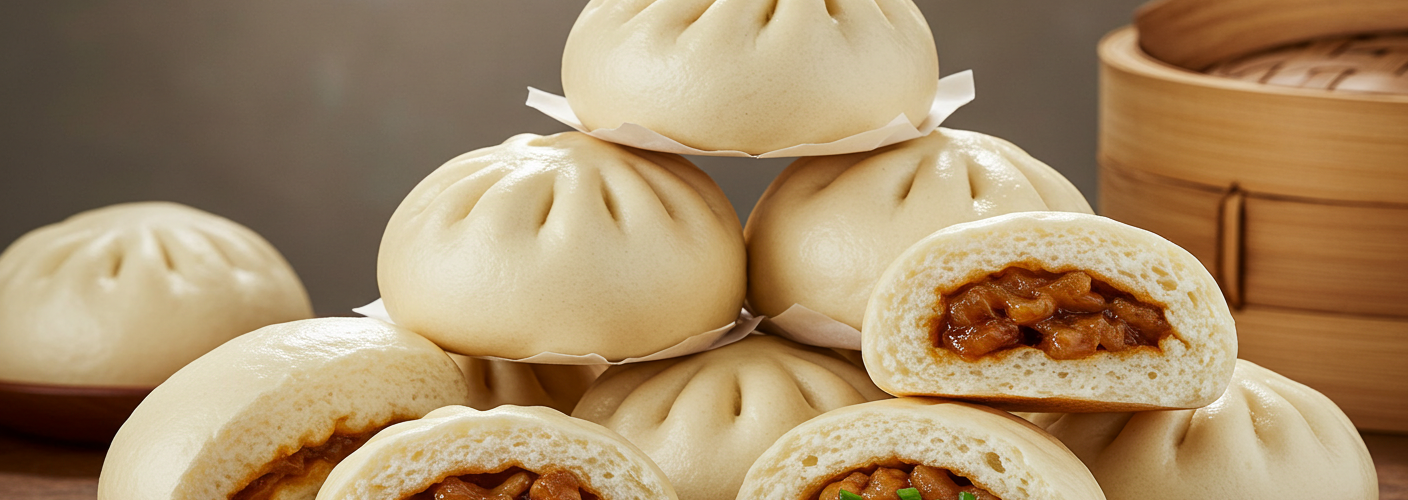When it comes to comfort food, few dishes can compete with the fluffy, savory perfection of baozi. These yeast-leavened steamed buns are a staple in Chinese cuisine, celebrated for their versatility, yummy fillings, and delightful texture. Whether you’re in a bustling street market in Shanghai or a cozy restaurant anywhere in the world, baozi bring a taste of tradition and a touch of joy to every meal.
What Are Baozi?
Baozi (包子), commonly referred to as steamed buns, are round, soft buns typically made from a fermented dough that is leavened with yeast. The dough is steamed to create a light, airy texture, making them an appealing choice for those who enjoy a fusion of flavors and ingredients. The versatility of baozi is one of its most attractive features; the fillings can range from savory to sweet, accommodating a wide array of taste preferences.
A Brief History
The history of baozi dates back to the Three Kingdoms period (around 220-280 AD), where it is said that a military strategist named Zhuge Liang created a meat-filled version to feed his soldiers. Since then, baozi has evolved and diversified, becoming a cherished dish in numerous cultures, each adding their unique twist to the traditional recipe.
The Making of Baozi
Creating perfect baozi involves a simple yet rewarding process. The dough typically consists of all-purpose flour, yeast, sugar, and water. The yeast is activated to create a light and airy dough, which is then allowed to rise. Once the dough has doubled in size, it is divided into small portions, flattened, and filled with an assortment of ingredients before being folded and pinched closed, forming a neat bun.
The filling options for baozi are nearly endless. Common fillings include seasoned ground pork, chicken, or vegetables, while sweet baozi might include red bean paste or sweetened custard. Each filling brings its flavor and character to the bun, making baozi an incredibly adaptable dish that can cater to various culinary tastes.
Cooking Methods and Serving Suggestions
The traditional cooking method for baozi is steaming, which allows the buns to cook evenly and retain moisture, resulting in a soft and pillowy texture. They are often served with a side of soy sauce, chili oil, or vinegar for dipping, enhancing the flavor with a touch of acidity or spice.
In addition to the classic steamed baozi, some variations include pan-fried baozi, known as “shengjian bao,” where the buns are first pan-fried to create a crispy base before being steamed. This method gives the buns an irresistible contrast of textures.
Cultural Significance
In China, baozi holds cultural significance and is often served during family gatherings, festivities, and special occasions. Their round shape symbolizes unity and completeness, making them a perfect choice for celebrations. The preparation of baozi is often a communal activity, bringing family and friends together to share in the process of making and enjoying this beloved dish.
Conclusion
Whether enjoyed as a street food snack or a family meal, baozi represents a unique blend of history, culture, and culinary tradition. Its comforting texture and diverse filling options make it a delightful addition to any menu. For those looking to explore new flavors, learning to make baozi at home is a rewarding culinary experience that is sure to impress family and friends alike. Embrace the joy of baozi and discover why these yeast-leavened steamed buns have captured the hearts (and stomachs) of so many!




Add comment